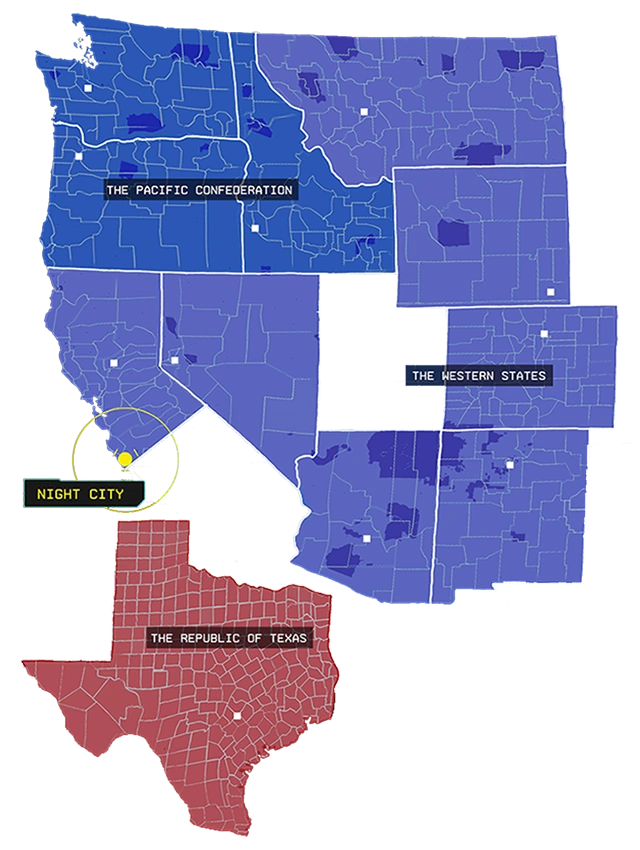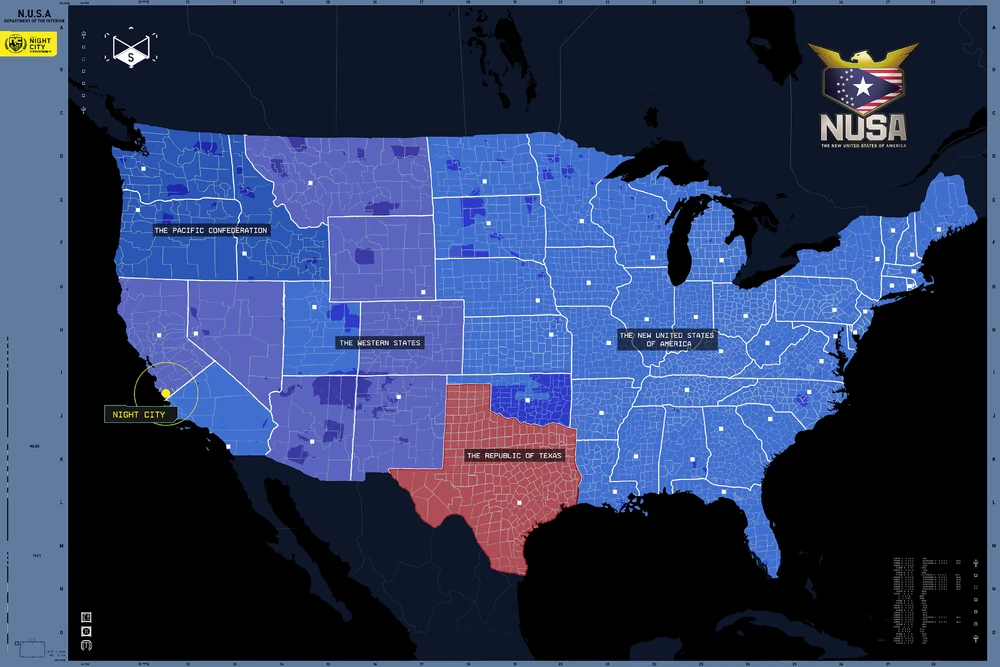Free States
The Free States originated in the aftermath of the Collapse, a period of political and social upheaval in the late 1990s and early 2000s that fractured the old United States. The catalyst came on August 17, 1996, when President James Richard Allen was assassinated during a campaign stop in California. His successor, Vice President Harold Harrison Hunt, assumed office and quickly began to enact the will of the Gang of Four, a powerful and deeply corrupt coalition of federal agencies and corporate interests. With the nation crumbling under economic collapse and widespread civil unrest, Washington imposed Martial Law. The military was ordered to return home to enforce federal authority, implementing shoot-on-sight curfews in major cities such as New York, Chicago, and San Francisco. This culminated in the horrific Houston Incident, where federal forces under Gang of Four control shelled the city with artillery, killing over 2,000 civilians. Federal control spread through unmarked agents from the DEA, INS, Federal Prison system, and corporate-backed paramilitary units, operating more like enforcers than protectors of public order. Their unchecked brutality and anonymity fueled mass resistance.
Cities and state governments, outraged by federal abuses, began to rebel. New York and Texas were among the first to resist, refusing to pay federal taxes and initiating economic blockades that halted the movement of goods across borders. Tensions exploded when a federal paramilitary force seized San Francisco, triggering open street battles with residents. The California governor called in the National Guard, which shockingly sided with the people against Washington. As the conflict escalated, federal forces attempted to seize Sacramento. In response, California formally declared its independence from the United States. The military, increasingly disillusioned with the Gang of Four, refused orders to suppress the rebellion. Instead of enforcing unity, their refusal gave other states the opportunity to break away and form what became known as the Free States. California's bold act inspired a wave of secession, as more states rejected Washington’s authority, severing ties and claiming autonomy. These newly sovereign entities were unified in their resistance to federal tyranny and maintained their independence through the 2000s and beyond.
The next major challenge to their autonomy came decades later in the 2060s, during the presidency of Rosalind Myers. In her 2068 reelection campaign, Myers proposed a unification plan to bring the Free States back under federal control. While some regions like Southern California and Utah agreed to rejoin the New United States of America (NUSA), most others rejected the plan. North and South Dakota also returned to the Union during or just before the conflict. In response, the resisting western Free States banded together, forming the Free States of North America, a military alliance that included Northern California, Arizona, Colorado, Montana, Nevada, New Mexico, and Wyoming. The resulting Unification War lasted from 2069 to 2070, with the NUSA attempting to forcibly bring the Free States back into the fold. The war ended in a stalemate with the Treaty of Unification, which allowed the Free States to retain their autonomy while requiring them to participate in the new federal government structure and end inter-state hostilities.
By the mid-2070s, the Free States were formally divided into three distinct political blocs. The Western Corporate States—comprising Oregon, Washington, and Idaho—remained neutral during the Unification War and went on to form their own corporate-led administration with strict visa and residency programs. The Free States of North America—consisting of Northern California, Arizona, Colorado, Montana, Nevada, New Mexico, and Wyoming—remained the core of anti-NUSA sentiment, firmly opposing federal encroachment. Lastly, the Republic of Texas, which had always walked its own path, rejected both the NUSA and the Free States’ alliance, maintaining its independence as a sovereign entity. Night City, while technically independent, is often considered part of the Free States due to its proximity and alignment with Northern California’s policies. Today, the Free States include Arizona, Northern California, Night City, Colorado, Idaho, Montana, Nevada, New Mexico, Oregon, Texas, Washington, and Wyoming. These states continue to stand apart from the NUSA, representing a decentralized and diverse opposition to federal control that was born from resistance, war, and the enduring desire for sovereignty.




Comments